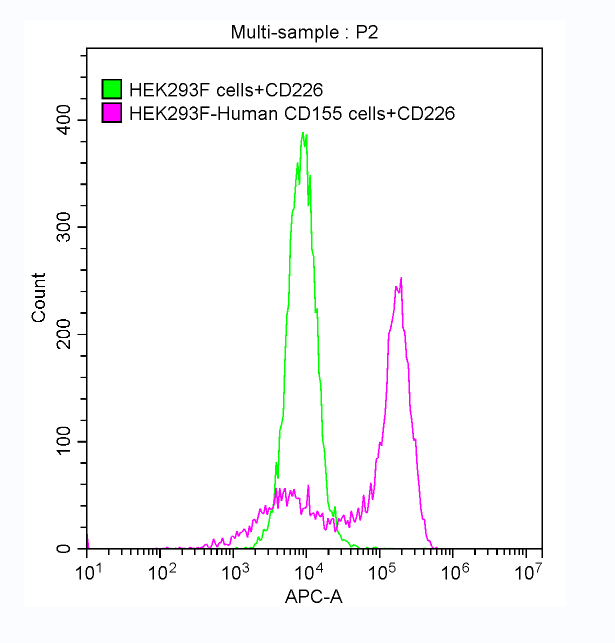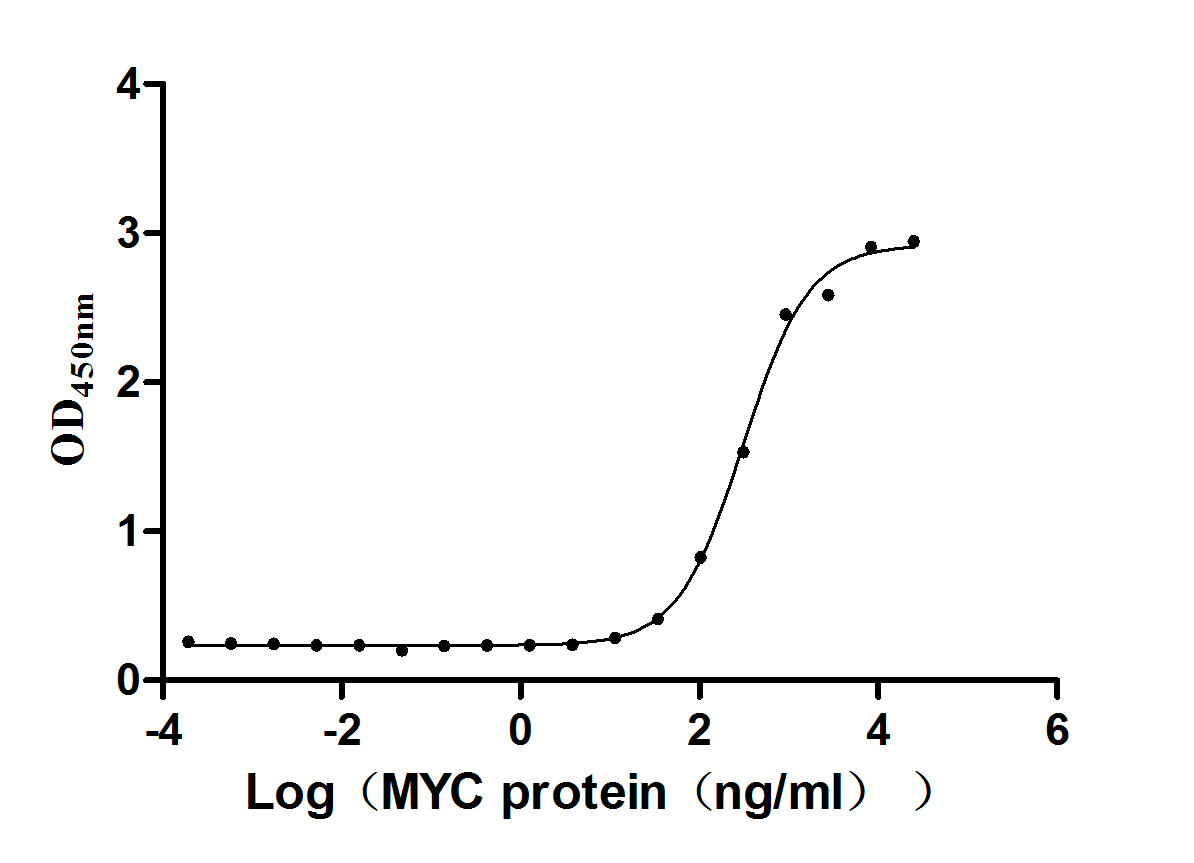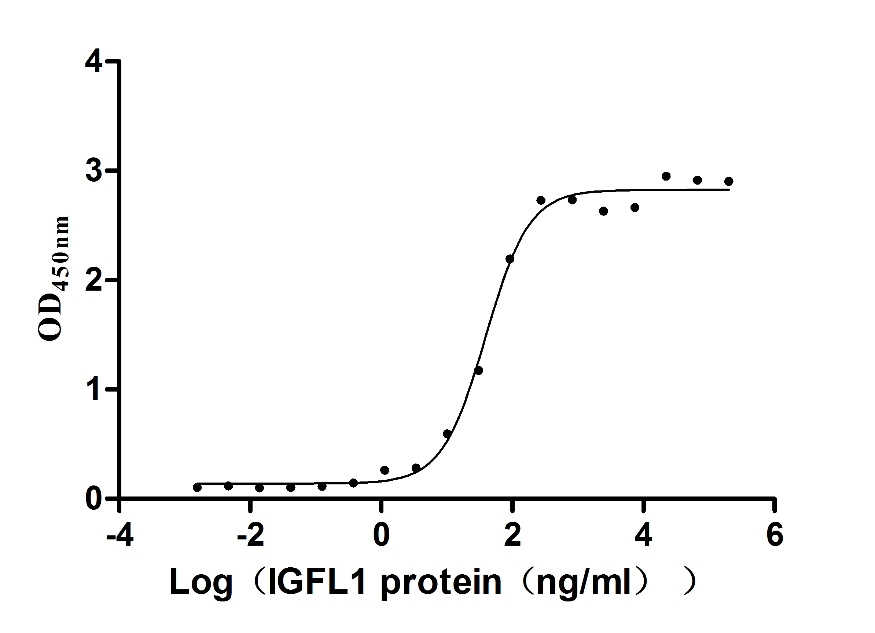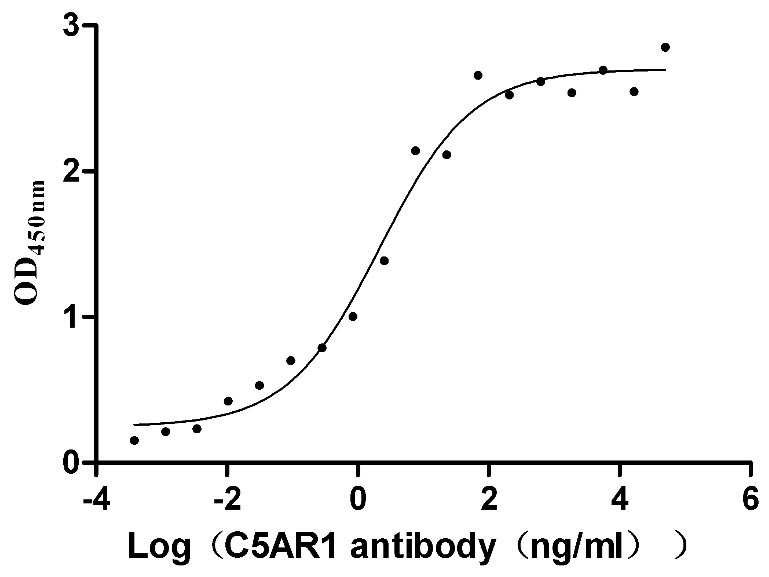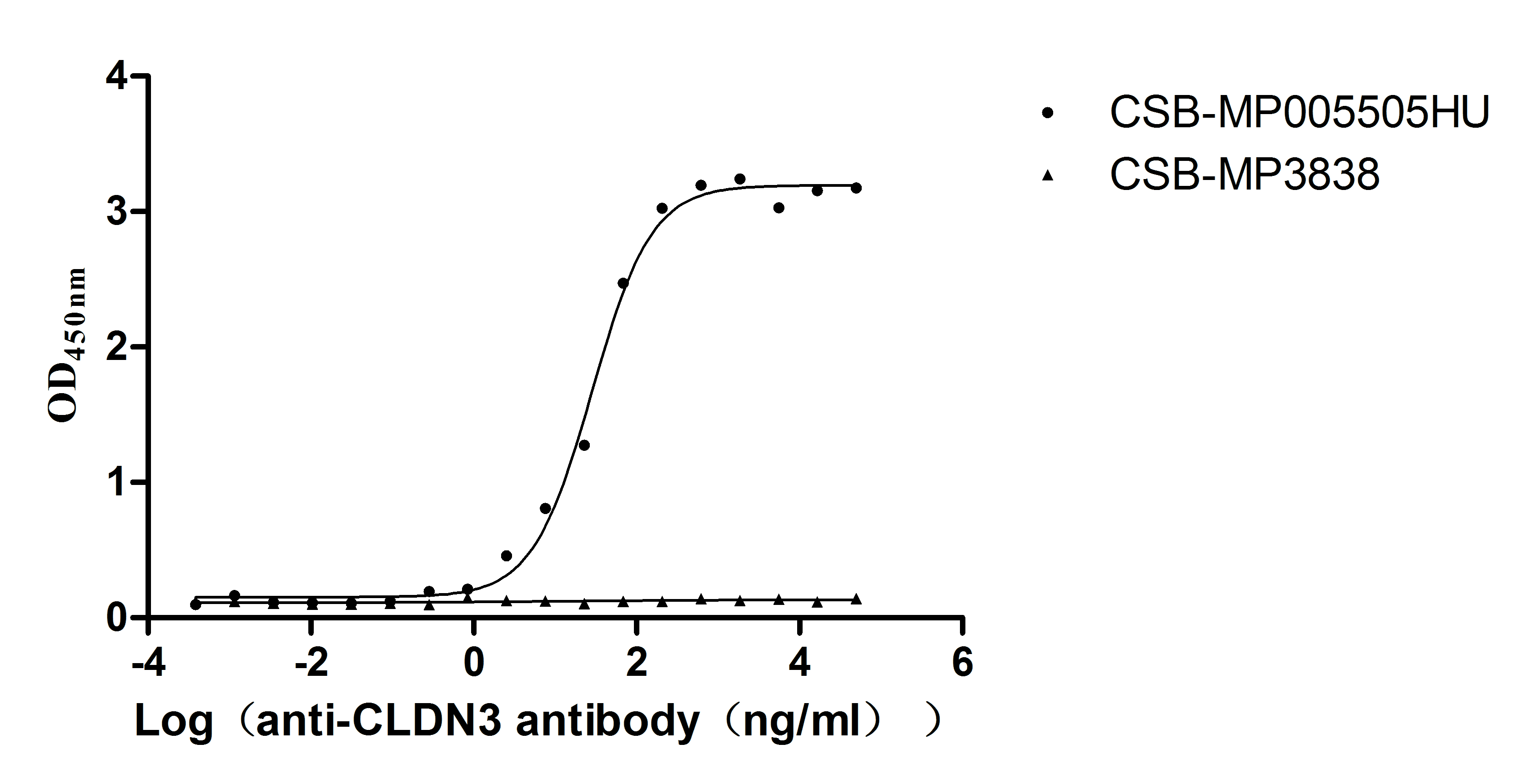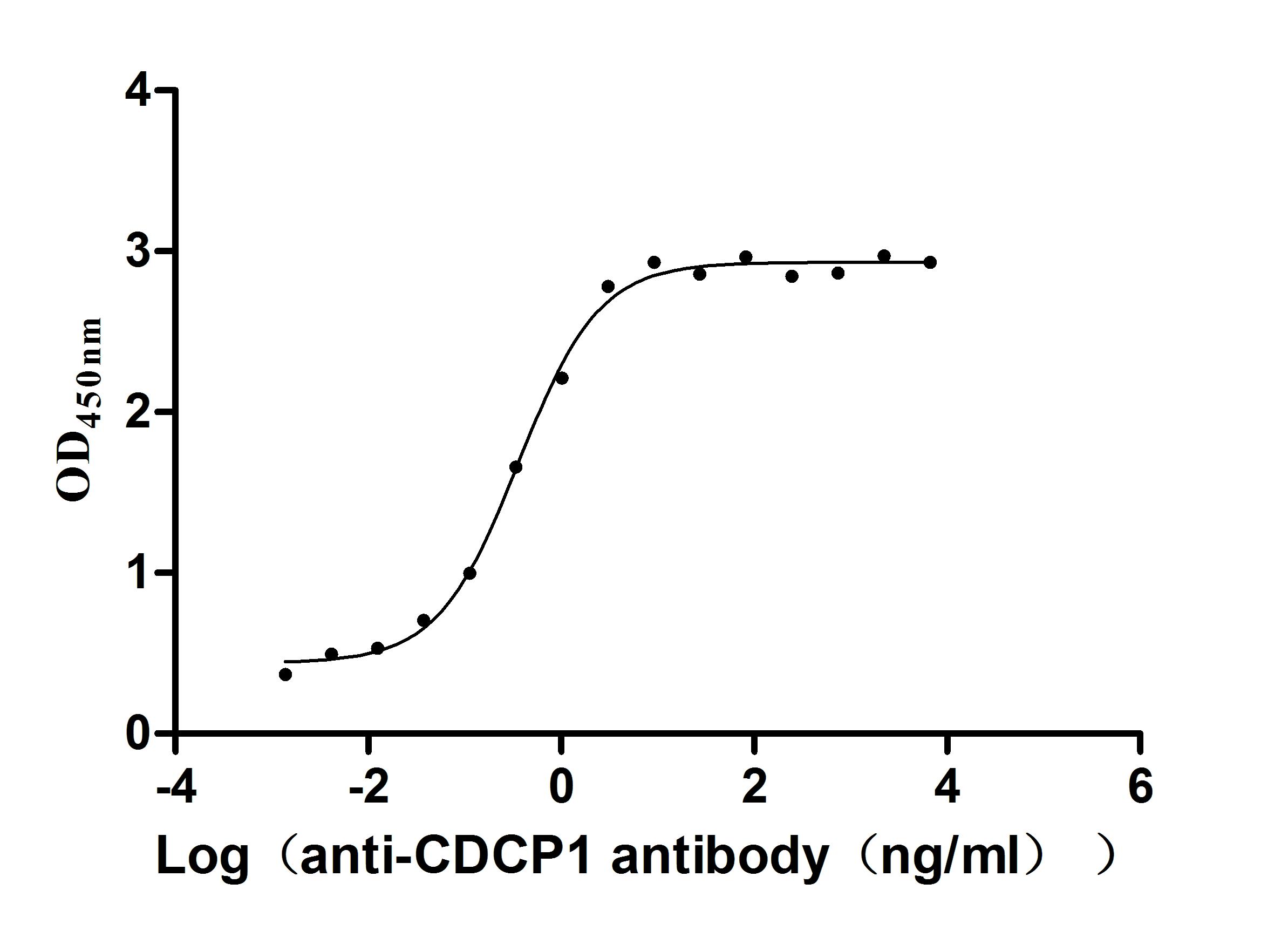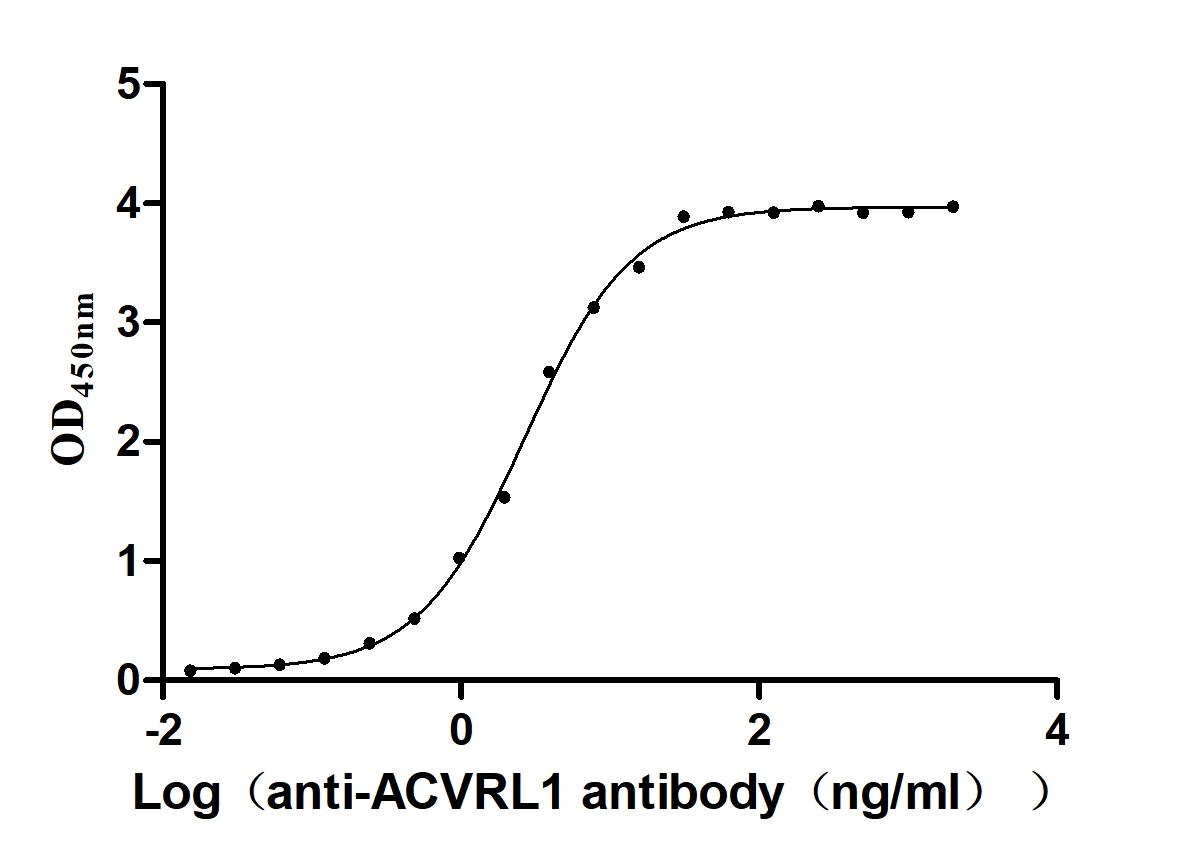Recombinant Rat Inositol 1,4,5-trisphosphate receptor type 1 (Itpr1), partial
-
中文名称:大鼠Itpr1重组蛋白
-
货号:CSB-YP011912RA
-
规格:
-
来源:Yeast
-
其他:
-
中文名称:大鼠Itpr1重组蛋白
-
货号:CSB-EP011912RA
-
规格:
-
来源:E.coli
-
其他:
-
中文名称:大鼠Itpr1重组蛋白
-
货号:CSB-EP011912RA-B
-
规格:
-
来源:E.coli
-
共轭:Avi-tag Biotinylated
E. coli biotin ligase (BirA) is highly specific in covalently attaching biotin to the 15 amino acid AviTag peptide. This recombinant protein was biotinylated in vivo by AviTag-BirA technology, which method is BriA catalyzes amide linkage between the biotin and the specific lysine of the AviTag.
-
其他:
-
中文名称:大鼠Itpr1重组蛋白
-
货号:CSB-BP011912RA
-
规格:
-
来源:Baculovirus
-
其他:
-
中文名称:大鼠Itpr1重组蛋白
-
货号:CSB-MP011912RA
-
规格:
-
来源:Mammalian cell
-
其他:
产品详情
-
纯度:>85% (SDS-PAGE)
-
基因名:
-
Uniprot No.:
-
别名:Itpr1; Insp3r; Inositol 1,4,5-trisphosphate receptor type 1; IP3 receptor isoform 1; IP-3-R; IP3R 1; InsP3R1; Type 1 inositol 1,4,5-trisphosphate receptor; Type 1 InsP3 receptor
-
种属:Rattus norvegicus (Rat)
-
蛋白长度:Partial
-
蛋白标签:Tag type will be determined during the manufacturing process.
The tag type will be determined during production process. If you have specified tag type, please tell us and we will develop the specified tag preferentially. -
产品提供形式:Lyophilized powder
Note: We will preferentially ship the format that we have in stock, however, if you have any special requirement for the format, please remark your requirement when placing the order, we will prepare according to your demand. -
复溶:We recommend that this vial be briefly centrifuged prior to opening to bring the contents to the bottom. Please reconstitute protein in deionized sterile water to a concentration of 0.1-1.0 mg/mL.We recommend to add 5-50% of glycerol (final concentration) and aliquot for long-term storage at -20℃/-80℃. Our default final concentration of glycerol is 50%. Customers could use it as reference.
-
储存条件:Store at -20°C/-80°C upon receipt, aliquoting is necessary for mutiple use. Avoid repeated freeze-thaw cycles.
-
保质期:The shelf life is related to many factors, storage state, buffer ingredients, storage temperature and the stability of the protein itself.
Generally, the shelf life of liquid form is 6 months at -20°C/-80°C. The shelf life of lyophilized form is 12 months at -20°C/-80°C. -
货期:Delivery time may differ from different purchasing way or location, please kindly consult your local distributors for specific delivery time.Note: All of our proteins are default shipped with normal blue ice packs, if you request to ship with dry ice, please communicate with us in advance and extra fees will be charged.
-
注意事项:Repeated freezing and thawing is not recommended. Store working aliquots at 4°C for up to one week.
-
Datasheet :Please contact us to get it.
靶点详情
-
功能:Intracellular channel that mediates calcium release from the endoplasmic reticulum following stimulation by inositol 1,4,5-trisphosphate. Involved in the regulation of epithelial secretion of electrolytes and fluid through the interaction with AHCYL1 Plays a role in ER stress-induced apoptosis. Cytoplasmic calcium released from the ER triggers apoptosis by the activation of CaM kinase II, eventually leading to the activation of downstream apoptosis pathways.
-
基因功能参考文献:
- IP3RI protein expression is increased in the kidney of hepatorenal syndrome rats, and may be regulated at the transcriptional level. PMID: 30090007
- These findings highlight previously unidentified functions for IP3R isoforms in the heart with specific implications for hypertrophic signaling in animal models and in human disease. PMID: 28923351
- Data suggest that proteolytic processing of Itpr1 may represent a novel form of modulation of Itpr1 channel function and increases the repertoire of Ca2+ and PKA (protein kinase A) signaling achievable through inositol 1,4,5-trisphosphate/Itpr1 signal transduction. PMID: 28526746
- Our findings indicate that sustained SOCC activity, together with that of the sarco-endoplasmic reticulum Ca(2+)-ATPase, contribute to the maintenance of astrocytic Ca(2+) store levels, ultimately enabling astrocytic Ca(2+) signaling. PMID: 28336440
- InsP3 R-I-dependent Ca(2+) signalling is an early triggering pathway required for liver regeneration. PMID: 24814243
- These results demonstrated, for the first time, that IP3R physically interacts with Cx43 and participates in the regulation of Cx43 phosphorylation on S279/282, thereby affecting GJ intercellular communication in ventricular myocytes PMID: 25262337
- Overexpression of the Cys-->Ala mutated rat IP3R1 in Jurkat T cells reduced Ca2+ flux in response to T-cell receptor stimulation with anti-CD3, but did not alter thapsigargin-induced Ca2+ flux. PMID: 25368151
- a pleiotropic enzyme transglutaminase type 2 targets the allosteric coupling domain of IP3R type 1 (IP3R1) and negatively regulates IP3R1-mediated calcium signaling and autophagy by locking the subunit configurations. PMID: 25201980
- IP3R up-regulation in VSM is associated with enhancement and sensitization of IP3-dependent Ca(2+) release, resulting in increased VSM contraction in response to agonist stimulation. PMID: 24097979
- The study demonstrates low-affinity interactions between the N-terminal domains of an intracellular Ca(2+) channel, the type 1 inositol 1,4,5-trisphosphate receptor. PMID: 23555994
- CaBP1 binds via its C lobe to the cytosolic N-terminal region (NT; residues 1-604) of InsP3R1. PMID: 23650371
- novel insights regarding the regulation of IP3R1 during proteolysis and provide direct evidence that polypeptide continuity is not required for IP3R activation and Ca(2+) release. PMID: 23479737
- Inositol 1,4,5-trisphosphate and IP3 receptors act as inhibitors of autophagic processes in cardiomyocytes. PMID: 23137780
- An endogenous binding motif, 1-8-14, mediates conformational changes that are essential to IP3R activation. PMID: 23009366
- Data suggest that interfering physical and functional coupling between type 1 inositol 1,4,5-trisphosphate receptors (IP3R1) and transient receptor potential 3 channels (TRPC3) may be a therapeutic strategy to induce vasodilation in hypertension. PMID: 23045459
- This study demonstrated that InsP(3)R1 proteolysis disrupts neuronal Ca(2+) homeostasis, and potentially acts as a feed-forward pathway to initiate or execute neuronal death. PMID: 22762283
- IP3R1 localization via protein 4.1N is necessary for divalent calcium ion wave (Ca2+) formation, which in turn mediates neurite formation. PMID: 21389686
- Our clone had 99% similarity with the rat brain IP(3)R1 sequence; the exceptions were 39 amino acid deletions at the position of 1693-1731, and the deletion of phenylalanine at position 1372 that lay in the regulatory region. PMID: 22207335
- comparison of key domains in InsP3 and ryanodine receptors PMID: 22286060
- calpain cleaves InsP(3)R1 in a clinically relevant injury model, suggesting that Ca(2+) leak through the proteolyzed channel may act as a feed-forward mechanism to enhance cell death. PMID: 21859719
- high variance in the cytoplasmic region of IP3R1n shown by cryo-electron microscopy could be attributed to genuine structural flexibility PMID: 21827954
- in arterial smooth muscle cells, cav-1 co-localizes SR IP(3)R1 and plasma membrane TRPC3 channels in close spatial proximity thereby enabling IP(3)-induced physical coupling of these proteins, leading to I(Cat) generation and vasoconstriction PMID: 21098487
- all IP(3)R types are subject to ubiquitination at approximately the same locations and that, independent of cell type, IP(3)Rs are modified by monoubiquitin and Lys-48- and Lys-63-linked ubiquitin chains, although in differing proportions PMID: 21071436
- IP(3)R1 activation elevates BK(Ca) channel apparent Ca(2+) sensitivity through local molecular coupling in arterial smooth muscle cells. PMID: 20713546
- IP(3) stimulates direct coupling between IP(3)R1 and membrane-resident TRPC3 channels in arterial myocytes, leading to cation activation and vasoconstriction. PMID: 20378853
- Increased InsP(3)R expression may be a general phenomenon that underlies Ca(2+) changes during hypertrophy. PMID: 19934645
- Data conclude that for IP3R approx. 30 residues after TMD1 must be translated to allow a signal sequence within TMD1 to be extruded from the ribosome and mediate co-translational targeting to the ER. PMID: 19845505
- results indicate the InsP3R channel does not significantly differ functionally in terms of Ca2+ release rates between isoforms PMID: 11587548
- Results show that the interaction of calmodulin with the high-affinity Ca(2+)-CaM-binding site of inositol triphosphate receptor 1 does not play a direct role in biphasic modulation of the receptor by cytosolic Ca(2+) or in receptor inhibition by CaM. PMID: 11972451
- Regulation of Ca(2+) signaling in rat bile duct epithelia PMID: 12143036
- IP3R1 signaling is regulated by PKA, PP1 and PP2A in rat brain PMID: 12167631
- immobilization stress elevates mRNA of type 1 and 2 IP(3) receptors, mainly through the glucocorticoid responsive element PMID: 12435588
- Expression profiles of three isoforms of inositol 1,4,5-trisphosphate receptor in brown adipose tissue PMID: 12623131
- Repeated immobilization stress reduces the gene expression and protein levels in stellate ganglia PMID: 12820984
- InsP3-mediated Ca(2+) signaling in bile duct epithelia appears to be important for normal bile secretion in the liver, and loss of InsP3Rs may be a final common pathway for cholestasis. PMID: 14517800
- InsP(3)R1-PKA association is mediated by AKAP9; InsP(3)R1-AKAP9 binding promotes association of neuronal InsP(3)R1 with the NR1 NMDA receptor; and neuronal InsP(3)R1 associate with PP1 directly via carboxy-terminus and indirectly via AKAP9 PMID: 14982933
- 4.1N serves as a linker protein between IP3R1 and actin filaments PMID: 15364918
- Subject to alternative RNA splicing, with 7 sites of transcript variation, 6 within the open reading frame. PMID: 15739177
- The nuclear membrane of Purkinje neurones also contained multiple InsP(3)- activated ion channels localized exclusively in the inner nuclear membrane with their receptor loci facing the nucleoplasm PMID: 15774532
- These results show that gene expression of both type 1 and 2 IP(3) receptors is regulated by retinoic acid, although the effect of retinoic acid on mRNA levels of the type 1 IP(3) receptors is dependent on brain area. PMID: 15843050
- Our study illustrates how the junctional membrane IP(3)R complex connects different signaling pathways to define the fidelity and specificity of Ca(2+) signaling. PMID: 15911880
- Thus, cold exposure affects the response of the gene expression of the type 1 IP3 receptor to immobilization stress. PMID: 16118475
- IP3R isoforms may display a range of divalent calcium ion sensitivities that are determined by multiple sites within the protein and markedly influenced by the affiinity of the receptor for PMID: 16198415
- Type 1IP3 receptors predominate in intrinsic neuronal ganglia of cardiac atria. PMID: 16223514
- These data point to the adrenergic modulation of the type 1 IP3 receptors in the rat hearts. PMID: 16377004
- Results show that addition of neuronal calcium sensor-1 (NCS-1) to purified inositol 1,4,5-trisphosphate receptor type 1 (InsP3R1) increased the channel activity in both a calcium-dependent and -independent manner. PMID: 16691292
- CIB1 is a ubiquitously expressed activating and inhibiting protein ligand of the InsP(3)R PMID: 16723353
- it is concluded that most IP3R are expressed in intracellular stores but a tiny fraction is reliably directed to the plasma membrane, where they contribute substantially to the Ca2+ entry evoked by the B-cell receptor PMID: 16840702
- Loss decreased the sensitivity of hepatocytes to vasopressin but had little effect on the initiation or spread of Ca(2+) waves across hepatocytes. PMID: 17284437
- IP3R1 is clustered at the node of Ranvier, in a distribution that is similar to the Nav1.6 sodium channels in the sciatic nerve. PMID: 17496801
显示更多
收起更多
-
亚细胞定位:Endoplasmic reticulum membrane; Multi-pass membrane protein. Cytoplasmic vesicle, secretory vesicle membrane; Multi-pass membrane protein. Cytoplasm, perinuclear region.
-
蛋白家族:InsP3 receptor family
-
组织特异性:[Isoform 3]: Expressed in the brain.; [Isoform 7]: Expressed in the fetal brain and peripheral tissues.
-
数据库链接:
Most popular with customers
-
Recombinant Human CD40 ligand (CD40LG), partial (Active)
Express system: Mammalian cell
Species: Homo sapiens (Human)
-
Recombinant Human CD226 antigen (CD226), partial (Active)
Express system: Mammalian cell
Species: Homo sapiens (Human)
-
Recombinant Human papillomavirus type 16 Protein E7 (E7) (Active)
Express system: E.coli
Species: Human papillomavirus type 16
-
Recombinant Human Insulin growth factor-like family member 1 (IGFL1) (Active)
Express system: Mammalian cell
Species: Homo sapiens (Human)
-
Recombinant Human C5a anaphylatoxin chemotactic receptor 1 (C5AR1)-VLPs (Active)
Express system: Mammalian cell
Species: Homo sapiens (Human)
-
Recombinant Human Claudin-3 (CLDN3)-VLPs (Active)
Express system: Mammalian cell
Species: Homo sapiens (Human)
-
Recombinant Human CUB domain-containing protein 1 (CDCP1), partial (Active)
Express system: Mammalian cell
Species: Homo sapiens (Human)
-
Recombinant Human Serine/threonine-protein kinase receptor R3 (ACVRL1), partial (Active)
Express system: Baculovirus
Species: Homo sapiens (Human)



